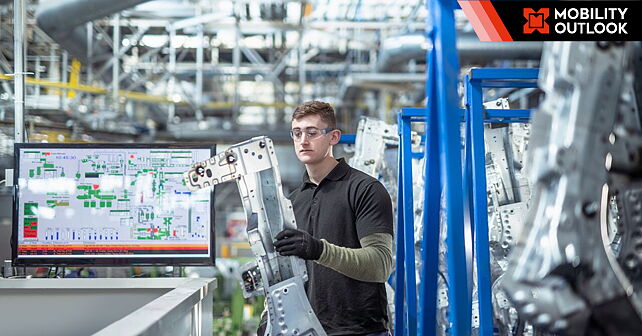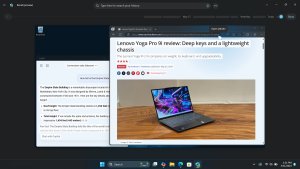As automobiles increasingly rely on software-driven technologies, vehicle manufacturers re-evaluate their R&D strategies. They are also reconsidering their approach to adapting to the changing landscape and capitalising on emerging business opportunities.
However, a peculiar but critical situation they face is identifying key elements to secure their desired market position. It is becoming clear to OEMs that traditional vehicle-centric models are no longer sufficient to engage consumers. Instead, vehicles are evolving into integral components of comprehensive software and service platforms catering to all consumer mobility aspects.
Speaking to Mobility Outlook, Raghavendra Kulkarni, Managing Director of Industry X at Accenture‘s Advanced Technology Centers in India, highlighted the current gaps in OEMs’ Engineering, Research, and Development (ER&D) capabilities to support software-enabled services. He reiterated the increasing reliance on software for vehicle functions, from development to rapid implementation, such as over-the-air (OTA) updates.
Software-centric Approach
Software plays a pivotal role in future product development. The transition to a software-centric approach necessitates complex Electrical/Electronic (E/E) architecture, requiring OEMs to seamlessly integrate intricate software systems with hardware components while ensuring reliability and cybersecurity.
Kulkarni noted that OEMs face the challenge of balancing desirability, viability, and feasibility in offering software-led services, particularly in functionalities like L2.5 ADAS and other connected car features, to ensure consumer willingness to pay.

Talent Crunch
Acquiring and retaining skilled software engineers is a major challenge for OEMs and ER&D centres. These organisations must also undergo a cultural shift to adopt modern engineering practices, such as agile cloud-native development and model-based engineering.
Cybersecurity and data privacy concerns further strain ER&D capabilities, necessitating the development of advanced security solutions and compliance with evolving regulations. Embracing open-source collaboration presents both opportunities and challenges. OEMs must navigate the complexities of reliable critical software functions, licensing issues, and intellectual property concerns while leveraging the benefits of open-source ecosystems, he explained.
Bridging The Gap
To address these gaps, OEMs must invest in E/E architecture, talent development, and cross-skilling. They should embrace modern engineering methodologies, enhance collaboration with technology partners, and prioritise cybersecurity in their ER&D efforts. This approach will ensure that they are ready to deliver software-enabled services that meet consumer expectations in the evolving automotive landscape.
Enhancing Middleware Solutions
Kulkarni stated that Accenture offers expertise in various areas of software development, including middleware solutions, often leveraging the latest technology standards. ‘We are currently developing an open-source technology stack that is Automotive Open System Architecture (AUTOSAR) light, less complex, and adopts a more intuitive programming workflow,’ he noted. This stack provides software developers a straightforward means to configure base software (BSW) using a textual configuration language that can be handled like code. It allows for full automation and seamless integration of the generation workflow into the build process. As a result, every software developer is equipped with all the necessary generators to run locally and as part of the build process.

This stack’s intuitive programming workflow simplifies the process for software developers, helping OEMs and suppliers accelerate development timelines while enhancing software quality.
Cybersecurity
Kulkarni highlighted that with the advancement of Software-Defined Vehicles (SDVs), vehicles are transforming into ‘supercomputers on wheels.’
‘Each vehicle has a unique E/E architecture composed of over a hundred ECUs, operating through various communication protocols such as Ethernet, CAN, and LIN. This diversity means there is no universal cybersecurity solution that can be applied to every car,’ he explained.
One effective method for identifying vulnerabilities during the design phase of an SDV is penetration testing. This involves deliberately attempting to breach the vehicle’s tech stack to proactively identify security flaws in a controlled environment. Additionally, Threat Assessment and Remediation Analysis (TARA) is a crucial engineering methodology for evaluating the specific threats related to a particular OEM and vehicle model. This process aids in developing tailored systems and procedures for each vehicle.
Kulkarni also mentioned collaborating with a leading premium vehicle manufacturer in Europe to establish a capability for detecting, triaging, and managing security incidents in the connected vehicle programme environment. ‘As a result, we have implemented 24/7 monitoring of security logs and events from connected vehicles, safeguarding customers from cyber threats and fraud,’ he added.
Also Read:
Accenture To Drive Hero MotoCorp’s Supply Chain Transformation



